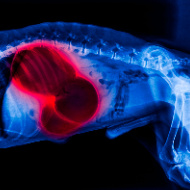New method for Florida eradication programme
Labradors in Florida have been trained to detect giant African land snails (GALS) as part of an eradication programme in the state.
First detected in Florida in autumn 2011, the non-native snails are known to consume at least 500 different types of plants, as well as causing structural damage to buildings by consuming plaster and stucco for calcium.
Furthermore, GALS and other types of snails and slugs can carry a parasite that can cause a form of meningitis in both humans and animals.
The Florida Department of Agriculture and Consumer Services has spent two years collecting and eliminating GALS, which it describes as an "invasive and destructive pest".
This has involved the application of bait, carrying out surveys, experimenting with trap designs, educational activities and enhanced inspections by lawn maintenance companies.
Most recently, dog detector teams have been trained to sniff out the snails.
"We are confident that we will win this fight," said Florida Commissioner of Agriculture Adam Putnam. "With the help of canine detector teams, we're able to detect snails in areas that were previously difficult to access."
In the time since the first GALS were found in the Miami-Dade area, more than 128,000 have been removed. However, federal guidelines state that eradication can only be declared two years after the last snail is collected.
Originally from east Africa, GALS can grow to 20 centimetres (eight inches) in length and can live for up to nine years. An adult typically produces around 1,200 eggs a year.



 The Kennel Club is inviting dog owners to attend a free webinar on gastric dilation-volvulus syndrome, also known as bloat.
The Kennel Club is inviting dog owners to attend a free webinar on gastric dilation-volvulus syndrome, also known as bloat.